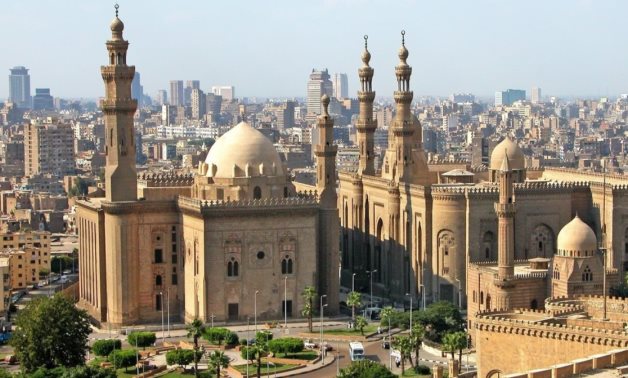
The historic city of Cairo is one of the most important and largest heritage cities in the world - social media
CAIRO – 14 December 2021: The historic city of Cairo is one of the most important and largest heritage cities in the world.
It is a lively city characterized by the richness of its urban fabric, in addition to the multiplicity of its monuments and historical buildings, which reflect the long history of Cairo as a political, cultural, commercial and religious capital of the Middle East and the Mediterranean basin.
According to the website of the Ministry of Tourism and Antiquities, Cairo's strategic location on the edge of the delta between the Nile River in the east and Al-Moqattam Mountain in the west has led to continuous human interaction with the city, which led to the formation of settlements creating the unique architecture of the place.
This human interaction contributed to accelerating the development of Cairo with the establishment of a network of canals, cisterns, baths, and fountains.
The two historical ports of Bulaq in the north and Fustat in the south contributed to linking the city closely with the Nile River.
The historical development of trade with Europe improved the performance of the Port of Bulaq in the north, while trade with India and Africa improved the performance of the Port of Fustat to the south, and this is shown through architectural masterpieces.
The period from the 9th to 15th century, also known as the Islamic Renaissance, was a golden age for the city. The prominent scientists, doctors, astronomers, religious scholars and writers of that era had such a strong influence that extended beyond the borders of the Islamic world.
This city is a distinct model of Islamic architecture, as it collected many unique architectural examples from the eras of the Umayyads, Tulunids, Fatimids, Ayyubids, Mamluks and Ottomans.
In view of the abundance and richness of the city's Islamic architecture, scholars, historians and the public have dubbed it “the city of a thousand minarets.”
Historic Cairo includes several sites that represent a unique form of human settlement that blends religious and residential uses of the place. Those sites include Fustat, Old Cairo, the Central Region, the royal Tulunid city, Citadel area, El-Darb El-Ahmar, Fatimid nucleus, Port of Bulaq and Juyushi Mosque.
Historic Cairo was enlisted on the World Heritage List in 1979, based on the recommendation of the International Council on Antiquities and Sites (ICOMOS).
Comments
Leave a Comment